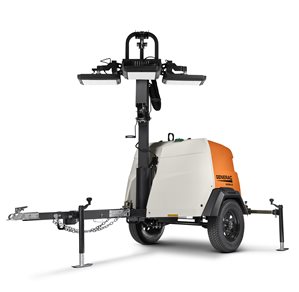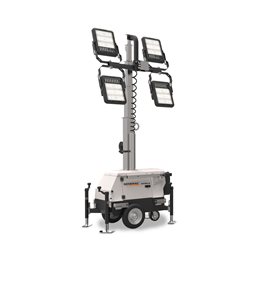
Depending on the application, one light tower may not be enough to light your entire operation. As an alternative to operating multiple diesel light towers, it is worth considering paralleling with electric light towers that do not have an engine. To do this, the user connects several light towers to a single power source, such as an engine-driven light tower, portable generator or shore power. The paralleled towers contain no engine, meaning that they produce no additional sound or emissions.
Because all of the towers receive power from a single source, the end user enjoys more flexibility. Key benefits include less overall fuel consumption, maintenance and noise.
Some power sources are diesel-driven light towers and generators. As such, diesel fuel maintenance needs to be considered. Because paralleling means using fewer units with diesel-fueled engines, there is less maintenance required for the same amount of lighting. Operational costs go down as the service interval decreases. Emissions drop, as well.

For jobs where there are noise limitations, indoor projects or when high mobility is important, paralleling electric towers adds additional versatility. The user can deploy the paralleled towers indoors while they are connected to an exterior engine-driven power source. In any case, because they don’t have a heavy engine to weigh them down, the paralleled towers are easier to relocate. They are also great for special event where refueling and less noise are important factors.
Every application requires a different solution and a different number of light towers deployed throughout an area. Since the power source has to accommodate all of the units in parallel, the size of that power source determines the amount of light towers that can be paralleled or linked. Also, the type of light towers paralleled together can determine how many can be linked together using one power source. For instance, more LED light towers can be linked together then metal halide light towers because the LED units consume far less power.
For more information on electric light towers, check out LINKTower from Generac Mobile.